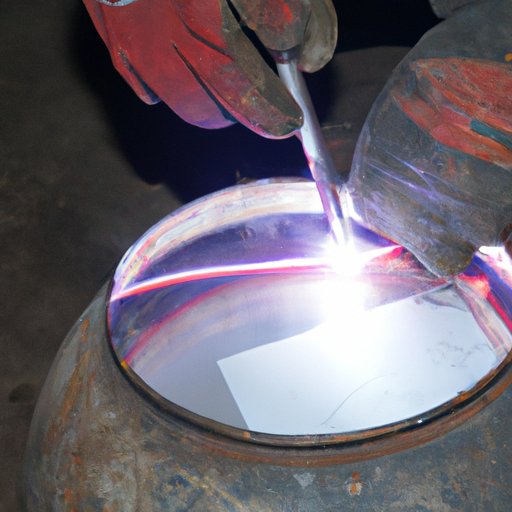
Introduction
Welding stainless steel is a complex process that requires a great deal of skill and experience. This durable metal is known for its strength, corrosion resistance, and appealing finish. However, many welders find it challenging to work with due to its unique properties. In this article, we will explore the basics of welding stainless steel and offer tips and tricks to help you master this technique.
Mastering Stainless Steel Welding Techniques: A Guide for Beginners
Before diving into the specifics of welding stainless steel, it’s important to understand the fundamentals. First, you must start with proper preparation. This includes thoroughly cleaning the surface of the metal, selecting the right filler material, and ensuring that your equipment is in good working order. Once your space is set up and equipped with the necessary tools, it’s time to begin.
Why Welding Stainless Steel is Different Than Other Metals
While stainless steel may seem similar to other metals, there are a few key differences that make it a unique material to work with. One of the most significant differences is the high level of chromium present in the steel. This makes it resistant to corrosion, but also makes the material more difficult to weld. The color of stainless steel also changes during the welding process, which can be disorienting to new welders.
Welding Stainless Steel with Ease: Tips and Tricks from the Pros
To overcome the challenges of welding stainless steel, it’s helpful to learn from the experts. Experienced welders suggest positioning the electrode at a higher angle than you would with other metals, using a lower amperage, and incorporating short welds to limit heat input. Additionally, using a pulse setting can help prevent overheating and warping of the metal.
The Dos and Don’ts of Welding Stainless Steel to Perfection
Welding stainless steel requires precision and attention to detail. Best practices for welding include controlling the amount of heat input, being mindful of the electrode angle, and selecting the appropriate filler material. It’s also important to avoid using a cold wire feed, starting the weld on an unclean surface, or using an electrode with high sulfur content.
Step-by-Step Guide to Welding Stainless Steel: From Preparation to Finishing
Once you’ve prepped the metal and gained a general understanding of the technique, it’s time to begin welding. We recommend starting with small projects to build confidence. Begin by striking an arc and holding the electrode perpendicular to the metal. Move the electrode side-to-side along the joint, incorporating short welds along the way. Once the weld is complete, use a stainless steel brush to clean up any slag or impurities.
Common Mistakes to Avoid When Welding Stainless Steel
As with any new technique, there are pitfalls to be aware of when learning how to weld stainless steel. Common mistakes include overheating the metal, using incorrect electrode angles, or failing to properly clean the surface before starting the weld. Always be sure to take your time and follow the proper protocol to avoid these issues.
Comparing Different Welding Methods for Stainless Steel: Which One is Right for You?
There are several different welding methods to choose from when working with stainless steel. The Tungsten Inert Gas (TIG) method is ideal for projects that require a high level of precision and fine detail. The Metal Inert Gas (MIG) method is more versatile, but requires greater skill to master. Finally, the Stick Welding method is useful for thicker pieces of metal, but produces a less attractive finish than the other methods.
Conclusion
Welding stainless steel requires practice, patience, and the right tools. With the tips and tricks outlined in this guide, you will be on your way to mastering this unique technique. Remember to clean the surface, use the appropriate electrode angles, and maintain proper heat input throughout the weld. And most importantly, have fun experimenting with different methods and techniques to find what works best for you.




